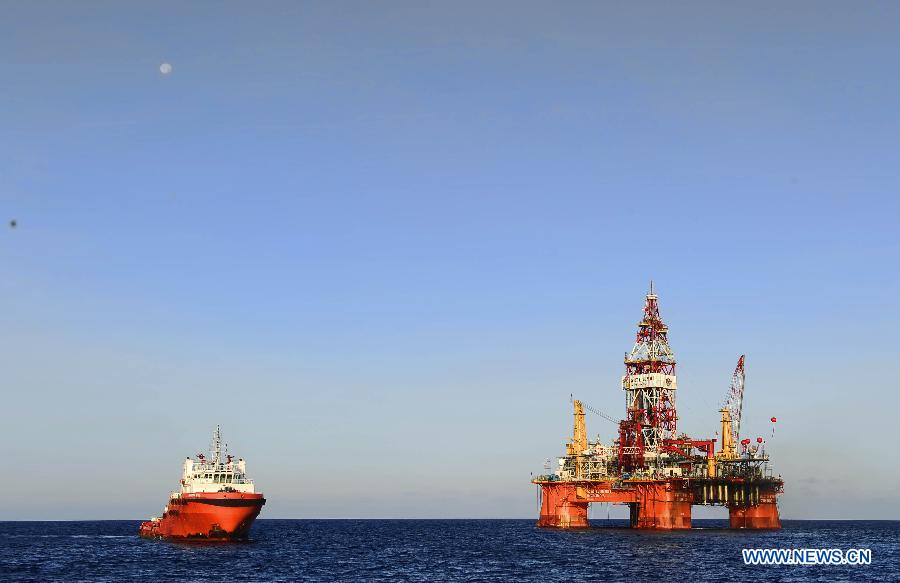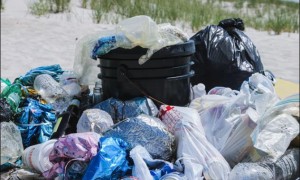By Tom McGregor, CCTV.com Panview commentator and editor
Many scientists and explorers believe the deep seas are the Earth's final frontier. Nearly all land, including distant islands, polar ice caps and isolated regions have already been mapped out and settled.

To uncover new mysteries of our world, we must dive into the deep sea to discover unseen regions and underwater wildlife to identify new life forms and the geological sediments of sea beds.
China is working with the International Sea Discovery Program, a joint project of 65 scientists from 13 countries, endeavoring to collect core sediment samples from the ocean floor to study the impact on Climate Change and the basin's information.
Beijing is playing a crucial role by deploying manned and unmanned submersibles to conduct sea tests in the Pacific and India oceans.
Going deeper and deeper
Xinhua reports that Cui Weicheng, director of the Hadal Life Science Research Center at Shanghai Ocean University, led a team of researchers to explore the Mariana Trench, one of the deepest spots of the ocean.
The group departed - Dec. 3, 2016 - on the Zhang Jian, a research vessel and mothership for the expedition. The Rainbow Fish series had included three deep sea landing devices and one unmanned search submersible.
On Dec. 25-27, 2016, the three deep sea landing devices descended into the trench with the first taking photos, the second taking sediment samples and the third taking biological samples.
All three devices reached 10,000-km. below sea level.
"The successful sea test marks another step in China's deep sea research," said Cui.
Last August, China's unmanned submersible, 'Haidou 1' dived to a depth - 10,767-m. at the Mariana Trench, which set a new Chinese record. China is the third country after the US and Japan to go down such depths.
Submarine observation network
Additionally, Beijing announced plans to set up a submarine observation network to explore deep sea regions in the East and South China Sea, which is the first of its kind.
A team of scientists based in Shanghai plans to collect data from the sea beds at a total cost - RMB2.1bn. ($US310 million).
Zhou Huaiyang, professor at the School of Ocean & Earth Science at Tongji University, announced the collected data will be used to explore natural resources in the region.
The new submarine network would embark on observations of ecological and marine disasters in the East and South China Seas.
Life in the trenches
The Mariana Trench holds special allure for Chinese scientists. It's an ideal location to study the impact of Climate Change, as well as to uncover secrets of the deepest parts of the sea.
Due to deep depths, water temperatures are chilly in a range of 1 to 4 degrees Celsius - slightly above the freezing mark. The water pressure is 1,000 times greater than at the ocean's surface, making strong and innovative equipment essential for submersibles that delve into its deep waters.
Nonetheless, a large variety of life forms continue to blossom, since hot vents from sea beds emit chemicals such as hydrogen sulfur that serve as food for bacteria and other microbes.
Consequently, more sea creatures come to life, including giant amoebas and bioluminescent fish, otherwise known as glow-in-the-dark fish.
Chinese scientists aboard the mothership Jiaolong, named after a mythical dragon, have already discovered 27 hot vents in the Indian Ocean, while uncovering even greater discoveries in the South China Sea.
Digging into South China Sea
The South China Sea has sparked greater interest among the international maritime scientific community. Despite the region being one of the most widely-traveled shipping routes, scientists have not targeted its waters for extensive studies until recently.
China's participation in the international submarine network has placed special significance on the region. The Shanghai-based Jiaolong expedition team have completed a 3rd stage dive on May 23.
The Jiaolong deployed unmanned submersibles that reached depths - 7,062-m. The research team collected sea-borne species that include a sea sponge, brittle star, two starfish and a 35-cm.-long red sea cucumber.
Recognizing the research value
China holds plenty of reasons to undergo extensive testings in the deep sea. They can uncover a better understanding of the ocean's biodiversity, ecology and bio-geography.
The Mariana Trenches are some of the deepest in the world, where scientists can learn how organisms can adapt and live in extreme environments.
In the South China Sea alone, Chinese teams have found a new branch of red coral attached to polymetallic modules and clusters of minerals containing 10 elements, such as cobalt and manganese.
Perhaps, new discoveries of natural resources can be found in the deep sea as well. Some experts say new energy sources could be tapped in the sea beds, such as combustible ice, which is considered more potent and cleaner burning than natural gas.
At the moment, the deep seas are mysteries for the public but with more endeavors of science explorations, we will discover deeper knowledge, which can bring greater benefits for the public good.







